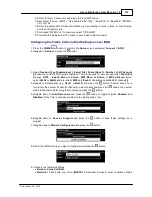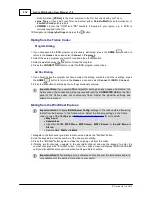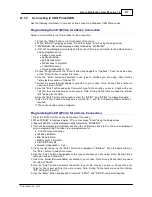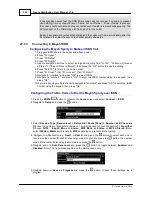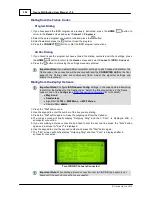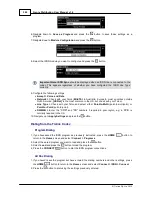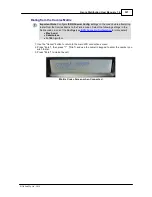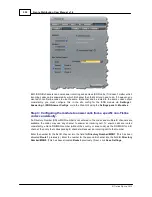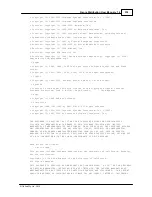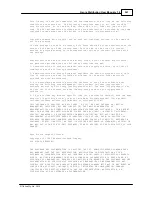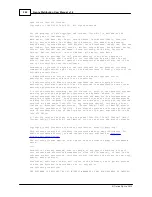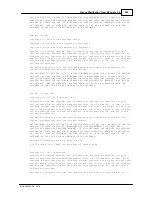
328
Genie Distribution User Manual v1.6
© Tieline Pty. Ltd. 2015
27.8
Using Answer Routes for Sessionless ISDN Calls
Tieline Genie Distribution and Merlin PLUS audio codecs support multiple connections using a
variety of connection transports such as IP, ISDN and POTS. Tieline codecs support using Tieline
session data, which assists with configuration and routing of multiple incoming calls to these
codecs. In addition, audio ports can be used to successfully route IP calls to your preferred codec
inputs/outputs.
If you are accepting calls from multiple non-Tieline ISDN codecs then you will be making
"sessionless" connections which require the codecs at both ends to be configured with the same
connection settings. In addition you can use “Answer Routes” and 'site-specific' module settings in
Genie Distribution and Merlin PLUS to route incoming calls to specific codec outputs. (Note: Merlin
codecs can also be configured to accept 2 ISDN calls from non-Tieline codecs and would use
similar settings).
In the following example we will configure two incoming sessionless ISDN audio stream
connections (Note: Genie Distribution and Merlin PLUS support up to 4 sessionless ISDN audio
streams/connections using 2 ISDN modules and 4 B channels).
If you want 2 incoming mono ISDN calls to use input/outputs 1 and 2, then use answering audio
stream connections 1 and 2 in your codec program. If you want to use other inputs/outputs then
simply select the corresponding audio stream, e.g. answering audio streams 5 and 6 will route
audio via inputs/outputs 5 and 6.
So let's get started. There are 2 or 3 steps to ensure this is configured correctly, depending on
whether you want specific incoming calls to always use the same B channels and codec outputs or
not.
Step 1: Configure the Answer Route for the two ISDN Audio Stream
answering connections in the codec program.
Setup two ISDN audio stream answering connections in your program and use the
Answer Route
setting in the program wizard (as displayed in the following image):
You can use any
Answer Route
, for example
Route 1
for ISDN Audio Stream 1 and
Route 2
for
ISDN Audio Stream 2. The
Answer Route
number doesn’t have to match the audio stream number
because the route you select will be used by the incoming ISDN call. This is similar to how an
“extension number” is used to route a phone call.


